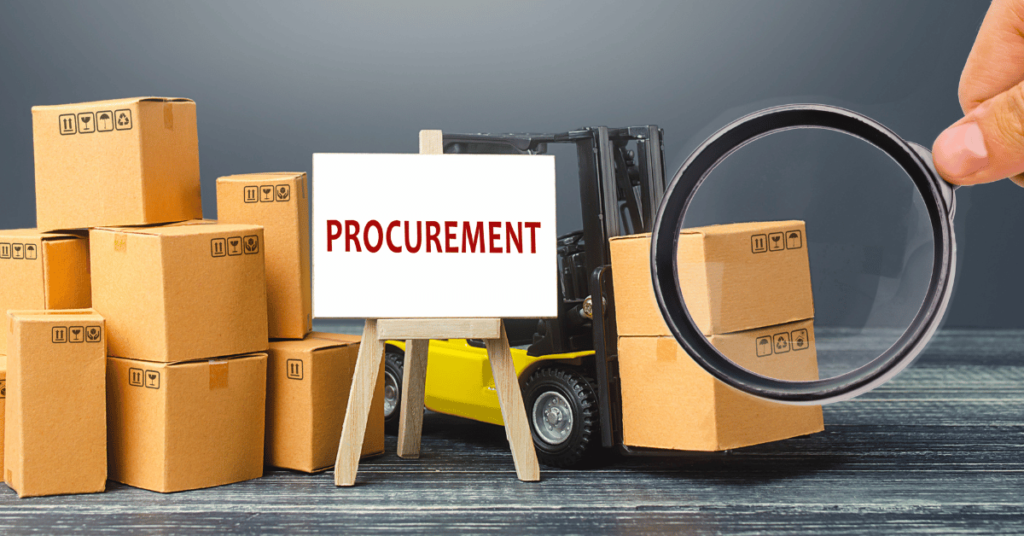Government procurement can be a pain.
It’s often a complex labyrinth to navigate, even more so with the added challenges of bureaucratic processes, fraud risk, and a lack of transparency.
Imagine if we had an intelligent system that could revolutionize and streamline all these problems, wouldn’t that be great?
This is where artificial intelligence steps in.
Essentially, AI is a system of computer algorithms that can make decisions, learn, and act intelligently, in a similar and sometimes even better capacity than humans can.
When applied to procurement, AI has the potential to significantly reshuffle the way governments supply chains operate, turning them into smart, efficient machines capable of surpassing our expectations.
In the public sector, it’s becoming a game-changer!
So, in this article, we’ll explore the transformative role of AI in government procurement, while taking a look at some examples of AI enhancing efficiency and driving innovation in the public sector.
Let’s get started.
1. Enhancing Procurement Efficiency

This is the traditional government procurement process:
You’ve got countless hours spent manually going through paperwork, a slow decision-making process due to bureaucratic red tape, and errors or inefficiencies just waiting to pounce at any step of the way.
It’s a time-consuming sludge of tedious tasks that could be employed in more strategic endeavors.
Enter artificial intelligence.
AI takes all those cumbersome processes and throws them into a whirring digital blender.
The result?
A smoothie of streamlined procurement practices packed with efficiency.
AI can automate routine tasks, giving procurement staff more time to focus on strategic sourcing and value-adding activities. It can drastically reduce the time to process invoices or requisitions, thereby accelerating the entire procurement cycle.
But the magic of AI doesn’t stop at automation.
It can also predict future procurement trends using vast volumes of data, helping the procurement team make informed decisions.
What’s more is that AI algorithms can even detect fraud risk before it happens, increasing public confidence in the procurement process.
In essence, AI isn’t just streamlining government procurement, it’s rebooting it – turning it into a sleek, efficient machine that can deliver services at a rapid pace.
It’s next-level transformation with a technological turbo boost.
2. Guaranteeing Cost Effectiveness

There’s no doubt about it: AI can be a real money saver!
Let’s consider the elephant in the room – the pricey bureaucratic costs.
The great deal of time, effort, and tons of paperwork involved in the procurement process can run up quite a bill for governments. Enter AI, our magic silencer of unnecessary bureaucracy.
Through automation, AI tools can take over repetitive tasks that used to require manual labor. These include routine order placements, invoice matching, and document analysis, just to name a few.
In fact Commerce Glass, a pioneer in government ecommerce, leverages machine learning to enable socially responsible procurement between government buyers and verified small vendors without bids or paperwork.
Automated tasks significantly reduce the need to spend financial resources on labor-intensive activities and can cut down on human errors, making government operations more efficient.
But what about the cost of integrating AI?
Good question, but consider this: while the upfront costs may sound intimidating, it’s critical to think long-term.
Integrating AI into government procurement systems means increased precision, faster decision making, and streamlined operations. This translates to sizable cost savings over time.
With AI, government procurement will be less about bureaucracy and more about smart, cost-effective governance.
And that’s a win in my book.
3. Optimizing Risk Management

One key area where AI is flexing its muscles is risk management.
Risk management is vital, especially in government procurement. We’re talking about huge sums of public money here, and the potential for trouble if things go wrong.
So, what does AI bring to the table?
Well, intelligent algorithms can sift through a gigantic heap of data in real-time to flag any potential risk factors.
These could include contractual risks, pricing irregularities, or behaviors suggestive of fraud. Through this, it can spot red flags that a human might easily overlook, thereby helping in maintaining transparency and minimizing risks.
Indeed, AI’s ability to identify and mitigate risks is becoming more apparent.
Let’s look at the U.S. Federal government, which adopted an AI risk management system for its procurement process.
By doing so, they managed to minimize procurement risks dramatically.
The AI system was successful in meticulously scrutinizing billions of financial transactions, identifying potential fraud and inconsistencies that humans could easily overlook.
The result?
Enhanced accountability, improved efficiency, and public money saved due to reduced risk of procurement fraud.
Furthermore, they’ve begun delivering on the promise of more transparent, accountable, and efficient public procurement while setting an inspiring precedent for governments around the world.
4. Boosting Transparency and Accountability
Transparency and accountability might sound like fancy buzzwords, but in the context of government procurement, they hold a lot of gravitas.
And guess what?
AI can majorly boost both.
When we talk about transparency in procurement, we are essentially referring to clear visibility into what’s happening at each stage of the process.
Right from tendering to contract management and compliance monitoring, AI tools can record, analyze, and even predict outcomes.
With all the information available at the click of a button, governments can not only plan better but also assure citizens that public funds are being used wisely.
And the best part?
This AI-driven transparency stifles the room for corruption since every single step is tracked and reported.
Accountability in government procurement, on the other hand, focuses on the responsibility of each person involved in the process.
AI makes it possible to identify who did what, when, and why.
This information is priceless when it comes to holding individuals accountable for their actions or inactions. In fact, AI’s automation capabilities can even prevent negligence or errors in the first place.
So, by embracing AI, governments are not only becoming more efficient but also more transparent and accountable.
And that, folks, is a win-win situation for everyone involved.
Conclusion
So, where do we go from here?
What does the future hold?
Imagine this: you’re in charge of procurement for the government and you have a personal AI assistant. It can analyze market trends, predict pricing, assess quality, mitigate fraud risks, and automate the tedious paperwork.
How transformational would that be?
The potential developments of AI in government procurement are just mind-blowing.
The future could potentially see AI-powered systems making the best procurement choices based on complex algorithms that consider quality, pricing, delivery time, and the supplier’s reputation.
All in just a few seconds.
We could see a future where procurement is no longer a tedious, time-consuming process, but one that operates at lightning speed with remarkable efficiency and minimal human intervention.
But on the flip side, having AI at the helm could have its drawbacks.
In the process of handing it all over to the algorithms, we may lose some human judgment, oversight, and ultimately, accountability.
Are we ready to put that much trust into machines handling the tax-payer’s money?
Or could AI be easily manipulated for unethical means?
While the future of AI in government procurement sparks thrilling possibilities, it also raises valid concerns.
And in this rapidly evolving tech era, finding a balance between the two might just be the key to revolutionizing public sector procurement.







Leave a Comment
You must be logged in to post a comment.